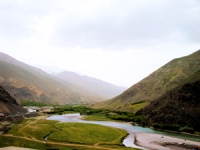Water sharing between Central Asian countries has been conflicting for quite a long time already.
Agrarian adaptations in Tajikistan: land reform, water and law
In Central Asia, agriculture and water management have ranked as the two most important economic activities in this arid environment. These activities gained even more prominence during the Soviet era as planners expanded irrigation into previously marginal land that bolstered their vision that the best land be allocated exclusively for cotton production. In the wake of the fall of the Soviet Union, Tajikistan has enacted laws meant to expand and clarify land use categories to meet the dual targets of expanding food production within the country while maintaining as much land as possible in cotton production - their economic mainstay. To this end, the Tajik government instituted five categories of land tenure. Though comprehensive, these new dispositions merely mask a continuation of top-down agrarian decision making implemented during the Soviet period. Consequently, this change has created new problems for farm labourers as they struggle to adapt to post-Soviet life and negotiate with the new bureaucracy in the face of 'de-modernization' and the loss of jobs, wages, and in many cases, access to productive land. This research demonstrates that the means by which the Tajik government expanded food production has contributed to agricultural problems apparent at the time of independence.





